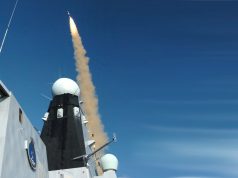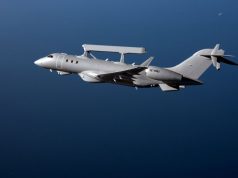Swedish defense company Saab will be delivering its multi-shot mine neutralisation system (MuMNS) for the Franco-British maritime mine counter measures (MMCM) program under an order awarded by prime contractor Thales.
Thales is delivering a fully integrated unmanned mine countermeasures system of systems to the two navies under a contract from November 2020.
Saab will be responsible for supplying the mine identification and disposal system MuMNS and is receiving 300 MSEK (approx. $36.5M) for the work. Deliveries of the first systems will take place in 2022.
MuMNS comprises an ROV equipped with up to three mine neutralization charges, a surface unit, launch and recovery system (LARS), winch with tether and a control position. The vehicle utilizes a shaped charge for high order target detonation. The charge is attached to the target by the vehicle and command detonated once the vehicle is clear.
“We are proud to announce our first customers of the MuMNS. It’s a great success to deliver capabilities that enable these navies to perform safer and more efficient mine countermeasures operations, since the operator can neutralise multiple sea mines from a safe distance,” says Görgen Johansson, head of Saab’s business area dynamics.
The bi-national MMCM program is the first step in the renewal of the operational concept for mine warfare in France and the United Kingdom, based on the use of unmanned systems which could potentially replace traditional minehunters.
This is a step change in capability, improving performances, productivity and removing the need to place members of the armed forces in harm’s way.
The subsystems developed for the program by Thales and its partners include unmanned surface vehicles (USV) to transport and connect solutions alongside the SAMDIS sonar to identify and classify threats. The sonar can be carried by autonomous underwater vehicles (AUV) or by towed synthetic aperture multiviews (TSAM) vehicle operated from the USV. The entire system is remotely supervised by operators working from a portable operational center capable of controlling up to three systems in parallel at sea.



























